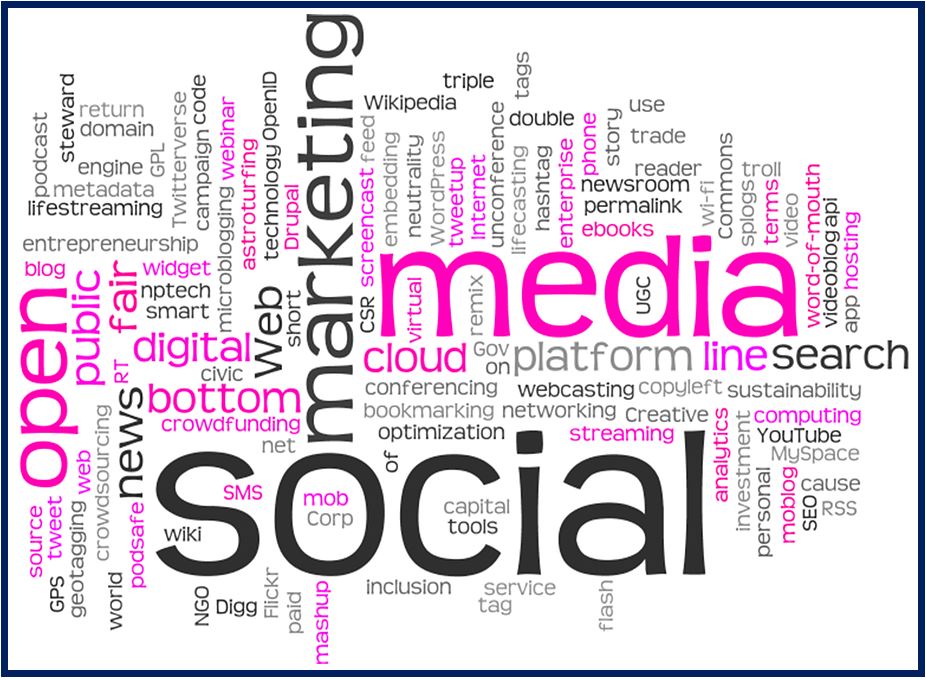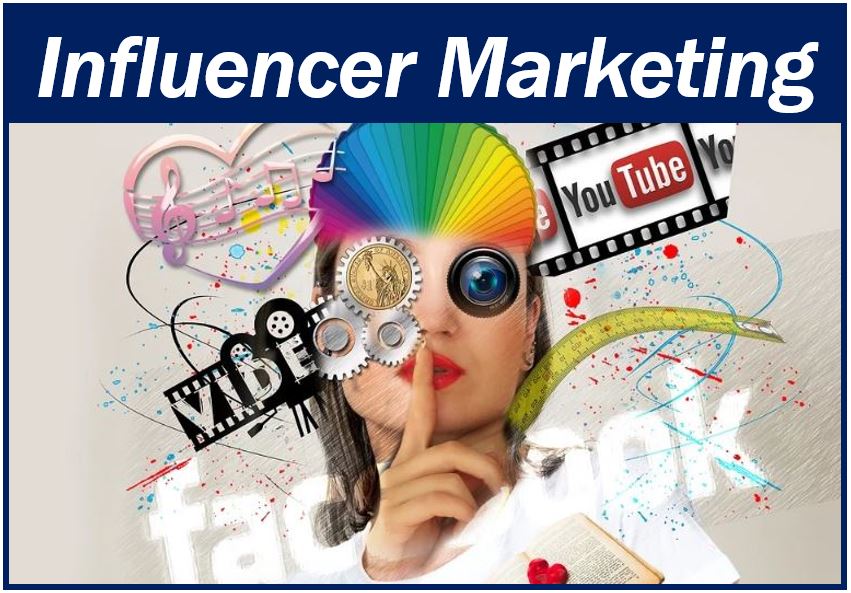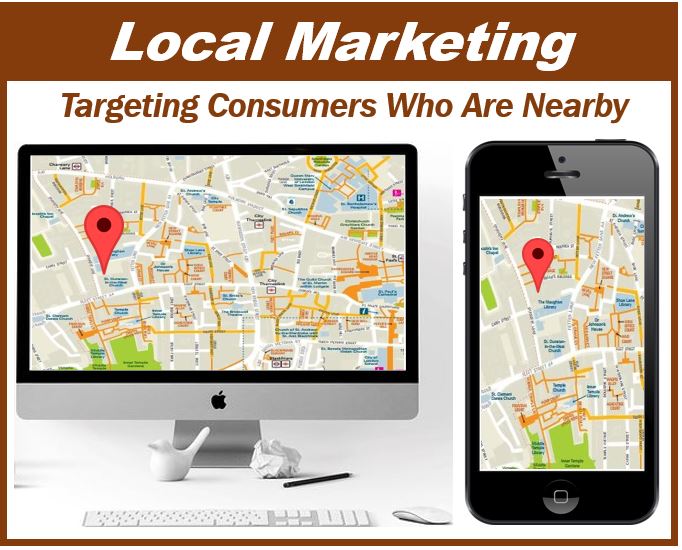Social media marketing sounds easy enough to wrap your head around, right? It’s marketing, but you do it on social media.
But if your idea of marketing is limited to just dishing out ads and posting promotional content, and if you think social media is limited to Facebook, Twitter, and Instagram – think again.
Marketing through social media is a lot more than that.
 A lot is happening in the social media marketing landscape in 2020. Trends change all the time, and this year, a lot can change – for better or worse – when it comes to online marketing.
A lot is happening in the social media marketing landscape in 2020. Trends change all the time, and this year, a lot can change – for better or worse – when it comes to online marketing.
The following are the social media marketing trends for 2020 you must follow if you want to become a successful marketer.
Not long ago, social media marketing agencies were all crazy about metrics that defined the success of marketing. Specifically, we went nuts about Likes, Shares and Follows.
Even to this day, marketers use different metrics to measure their social media success. These metrics usually include:
- Likes and/or Comments
- Shares and/or Retweets
- Consumer Interaction
- Revenue Attribution
- Consumers Taking Action
- Emotional Response
Most of these metrics are still hot in 2020. Marketers will always love actions by consumers after seeing their promotional content. Shares and retweets will not hurt either.
But Now the Conversation is Changing
This year is going to be a year of conversations.
Did you get a ton of Likes? Cool.
But what, as a marketer, are you really saying?
Public Facebook and Instagram Likes have been removed, forcing a pivot away from surface-level metrics such as Likes.
Total engagements, positive sentiment, the number of unique authors, and potential impressions will dethrone Likes and shares.
Long-term engagement > short-term viral moment
In other words, marketers will no longer just ride the digital marketing trends. No, they won’t.
What they’ll do, instead, is find what/who is driving that conversation.
User Input for Content Strategy
And because the focus is on what’s driving conversations, it follows that user inputs will also be a priority.
Contents that users themselves generate will be a long-lasting social media marketing trend.
After all, everybody nowadays creates content, no matter how small, and post them on their social profiles.
Social Proofing, Consumer-Centric Strategies
This trend highlights the need for businesses to establish real connections with their audience.
And let’s admit it, consumers want social proof, and they like to post it.
Consumer-centric strategies will be the norm in social media.
Personalization for Users
In order to achieve that consumer-centric success, marketers and businesses will create personalized content not based on demographic but on the specific users.
This is data at work – and ad at work
Of course, it’s pretty impossible to personalize each and every post and social media content. That’s why instead of focusing on a broad range of demographics, marketers will focus on one segment.
And waste zero focus adds on the ads on them.
As a user, meanwhile, this means you’ll get more personalized content and ads based on your online activity.
This has been going on for years, but 2020 is the year this marketing trend will break ground on social media platforms.
Personalized Personalities
Let’s make this simple: people nowadays customize their personalities based on the products, shows, and things they consume.
There are no longer one or two labels you could put on a person, in terms of their preferences.
Because that person has adopted, stitched, and practiced a certain combination of traits, habits, and personalities to make him or her himself or herself – from products businesses sell him or her.
This means businesses and marketers will try harder to personalize their content for such users.
Communities, Online Tribes
Social proofing and personalized personalities appear to be contradicting, don’t they?
On the one hand, social media users want the validation they can get from others.
On the other, they also want to be unique, customized, and just overall different.
The fix to this: Communities. Or, as marketers nowadays say, online tribes.
What are Online Tribes?
Social media has made it easier to find people with the same attitude, interests, beliefs, and habits as one user.
That user needs validation from similar people. But among the biggest similarities they can have are, you guessed right, personalized personalities.
No matter what we do, we are social animals.
We love tight-knit online communities. Building meaningful connections with users within a specific community is much better than:
- Casting a wide net
- Seeing what comes up
That strategy no longer works.
Younger Audience, Distinct Brand Voice
The marketing tribe approach more usually appears among businesses with younger audiences.
Brands try to respond directly to these customers. What’s more, they use a distinct brand voice to communicate with these users.
Younger audiences emphasize uniqueness – why else would they want personalized personalities?
Privacy
Again, a contradiction happens here: users also want some privacy.
It’s a balancing act for marketers.
They have to hit a good spot between interaction and privacy. For instance, some features in Instagram allow users to share their Stories with only a select group of friends.
That allows users to feel more intimate, but without sacrificing all of their privacy.
Brand Advocacies and Controversies
Another social media marketing trend that’s already dominating the scene now is the idea of brand advocacies.
Although it’s not really new for a company to position itself with advocacy or social campaign, recent years have seen brands trying to maximize their audience reach and interaction through such campaign.
For instance, you’ll remember Nike’s advocacy with Colin Kaepernick when they advocated for equality and social justice.
Did we just open a can of worms there?
Controversies = Publicity
In this context, advocacies are generally targeted at specific audiences. A company selling cosmetics and makeup will probably advocate for some sort of feminism.
Heck, even a popular brand of shaving razor advocated against toxic masculinity,
There’s also the never-ending issue of racism, inequality, animal rights, and climate change.
Controversies are inevitable. Marketers can lose the audience as much as they gain. So why pursue it?
It’s publicity. The old saying, “Bad publicity is still publicity,” still rings true here.
But It’s Also About the Users
As we’ve discussed above, users love brands that have a distinct voice. They also love brands that validate people as much as they make them feel unique.
In other words, the flak is short-term, but the reputation and strong brand identity are long-lasting.
And that’s what 2020 marketing trends and users are all about.
Influencer Marketing Will Change
 And it’s not a minor change, either.
And it’s not a minor change, either.
There’s going to be a shakeup.
Previously, the so-called influencer marketers were people who get paid truckloads of money to promote certain brands using their social media platforms.
Circling back to the topic of Likes, Follows, and Shares, influencers used to depend on these surface-level metrics.
Higher Standards
Social media users have caught on, and they no longer fall for some hacks who call themselves influencers.
What users want now are people who can back up their label and really say something.
These days, influencers need to bring something unique to the table. They have to develop an authentic relationship with their subscribers, followers, and community.
Influencer Marketing for 2020
And this year, it is likely that marketers will go for more “nano influencers.”
What are nano influencers? Any chance they’re like Tony Stark’s nanotech?
Unfortunately, Tony Stark doesn’t have anything to do with them.
Seriously, though, nano influencers are those that only have a small community of followers. Around a thousand or two.
Why do companies hire them if they only have a small following?
It’s simple.
Usually, these nano influencers have tighter connections with their fans, followers, and subscribers. They know exactly what these two thousand people like and want.
And marketers hire them for that intimacy.
Niche-Specific Platforms
- Another social media marketing trend in 2020 that will boom is the use of niche-specific platforms.
- Twitch for gamers.
- Tinder for dating.
- Spotify for music.
- Netflix for binge-watching.
- LinkedIn for B2B campaigns.
- Tiktok for, whatever that is they do. It’s fun!
- Financebrokerage for forex trading.
- Seriously, the list goes on.
There’s a sea of opportunities for social media marketers in these niche-specific platforms. Depending on what business they run, marketers will find a platform for the specific niche.
No Social Media Platform is Ever Truly Dead
Yes, there may be some platforms that have gone extinct. Friendster, MySpace, etc. These platforms were rock stars in their mayhem days. They’re gone now.
But social media platform developers already learned their lessons. And guess what, no social media platform is ever truly dead.
Rethinking which Platform is Best
You might be getting the impression that you need to throw all social media platforms on the wall see which one sticks. Nope. You don’t have to, borrowing from a popular cartoon line, catch ‘em all.
Marketers just need to understand which platforms are worth the resources. They should pay off. Marketers need to find where their brand can shine best.
Local Targeting

Local targeting will also rock the world of social media in 2020.
SEO specialists for local brands target local consumers. And local marketers will also adopt local targeting strategies to raise brand awareness.
On the broader level, geotargeting and location-based targeting will be top priorities. Marketers will use geotagging on their posts and stories.
Geotagging Works Magic
Geotagging is available on nearly every social media platform out there. And marketers absolutely love the tool.
Users will find it easier to find a brand with a geotag. They’ll see how many people in the same location use the brand or buy its products or services.
And this feature works magic when it comes to promoted content or tweets. As a result, marketers can deliver the content to the correct audience – without a sweat.
Video Content is Taking Center Stage
Make no mistake. The rise of video content marketing is going to continue even beyond 2020.
And why not? Video contents are much more appealing and visually engaging. They can be short Tiktok videos or longer YouTube videos.
According to one study, 82% of all online content will be video content. And not just on YouTube, mind you. Facebook, Tiktok, Twitter, and other platforms are seeing more video content every day.
Marketers Will Bombard Users with Video Content
And users will love it.
Of course, again, it’s quality over vanity. Video content will focus more on niches, how-tos, lists, and similar formats.
Here are some statistics:
- 92% of users watching mobile videos will share it with other users
- Social media videos provide 1,200% more shares than pictures and words
- Users spend a longer time on websites with videos
- 72% of customers would rather learn something by watching videos
So, don’t be surprised if most advertisements, promotions, and marketing campaigns will be social media videos.
Limited-Time Content will be In Demand
You know what they say. The best things in life are fleeting. One moment, it’s there; another moment, it’s gone.
Social media marketing will also follow this trend. Specifically, Stories.
The Stories feature on social platforms has been among the biggest trends in recent years. And it doesn’t appear to be slowing down.
Specifically, interactive kinds of Stories which engage the audience to interact will gain more traction.
Don’t Waste Your Audience’s Time
Fleeting content is popular because users don’t have a lot of time anymore. There’s a lot of apps and websites to visit, and well… work to do.
So, bite-sized, easily digestible content fits the bill. Stories are short, engaging, and, let’s admit it, addicting.
Social Commerce will Inevitably Rise
And because people more often try to buy products online, social media marketing in 2020 won’t be complete without social commerce activity spiking.
Instagram, Facebook, and Pinterest have been doing this for years.
And their activity is surely putting social commerce on a mainstream kind of retail channel. Offline stores and even websites will have to compete much harder against this trend.
Shoppable Posts
More and more people no longer want to leave a platform just to buy stuff. That’s why “shoppable posts” are becoming popular.
Shoppable posts give the user the choice to make a purchase on the platform without having to open another app. Instagram is a frontrunner in this.
Technology Adoption Will Be Prevalent
Who doesn’t love technology?
With the advent of new and exciting technological advancements, marketers will be missing out on a lot of things users are trying if they don’t adopt technology quickly.
Augmented Reality
 Adding digital elements to our reality is changing the way things look and happen. Social media marketers will definitely be looking for ways to leverage this augmented reality technology for their business.
Adding digital elements to our reality is changing the way things look and happen. Social media marketers will definitely be looking for ways to leverage this augmented reality technology for their business.
For instance, instead of just using AR for photo and video filters, the platform might use them to provide a unique shopping experience for their audience.
Marketers can also use it to provide a greater “feel” and “look” of their business to audiences.
Bots for Customer Service
And let’s not forget the good old customer service feature of businesses.
Users nowadays, as we’ve mentioned, do not like long waiting times. Chatbots for customer service will fix this problem.
Advanced technology means smarter chatbots, faster services, and round-the-clock availability.
Social Media Marketing Will Face a Lot More Scrutiny
And last but not the least, the trend of scrutinizing big tech and social media marketing will continue.
Data Privacy and Security
If you’ve been watching the news, tech and social media companies stumble upon heavy legal problems in terms of their practice.
Facebook, for instance, faced continual accusations of problematic data privacy practices.
And we all know this fiasco spurred a wave of Zuckerberg-hating trend.
That’s not to say Facebook and other social media sites are no longer trustworthy. If that were the case, marketers will be keeping their distance from Facebook.
The point is, data privacy and security will be a major factor for users when they choose services, products, and platforms.
And marketers will be keeping a close eye on that problem.
Regulations and Restrictions
And because social media platforms’ reputations have suffered, regulatory bodies and authorities will intervene.
This year, 2020, will probably see more restrictions in place to ensure users and their data will remain safe.
Marketers will be working hard to comply with these regulations while also trying to keep their marketing success high.
Conclusion
So, there you have them. The 13 social media marketing trends you must follow this 2020. Do you think other trends will be taking the center stage this year? If so, what are they?
Overall, the general trend for marketers to have the same fundamentals: create content and activities that add value to the users’ experience. Create a compelling brand identity and make sure the users see that.
_______________________________________________________
Interesting related article: “What is Social Media Marketing?”

